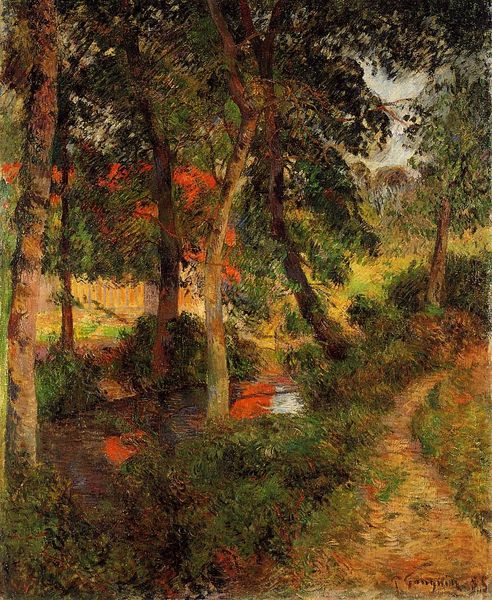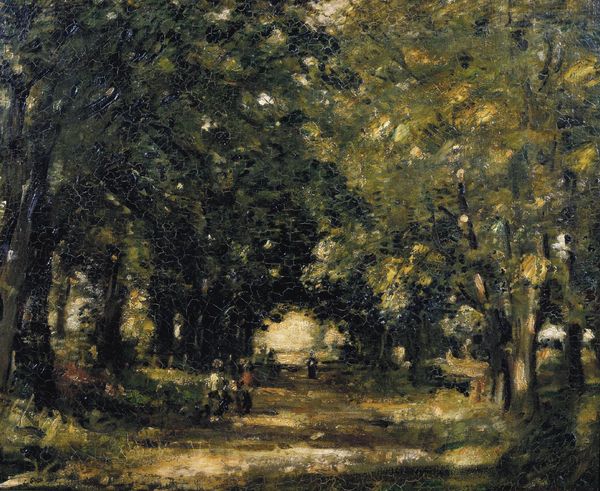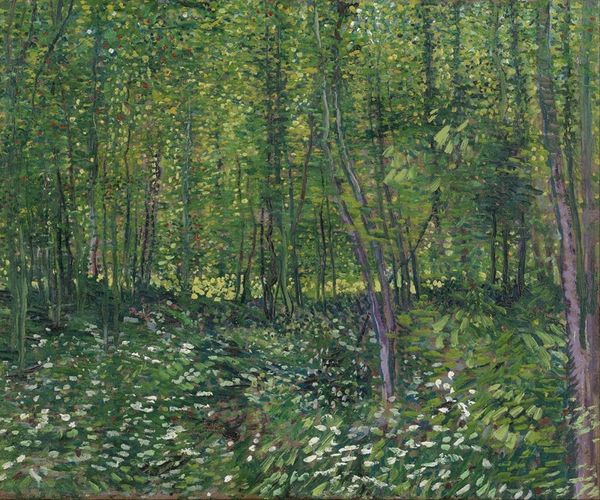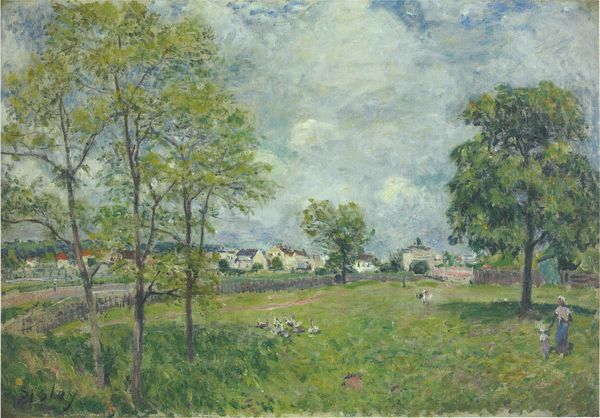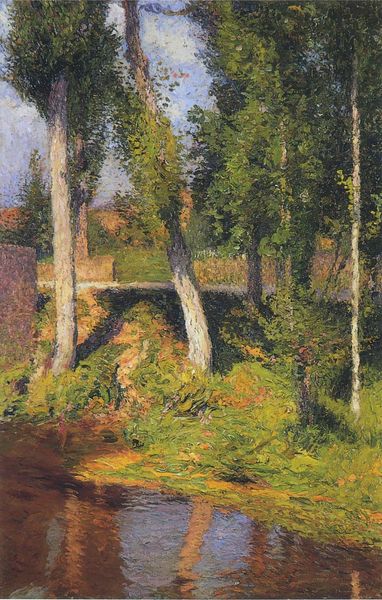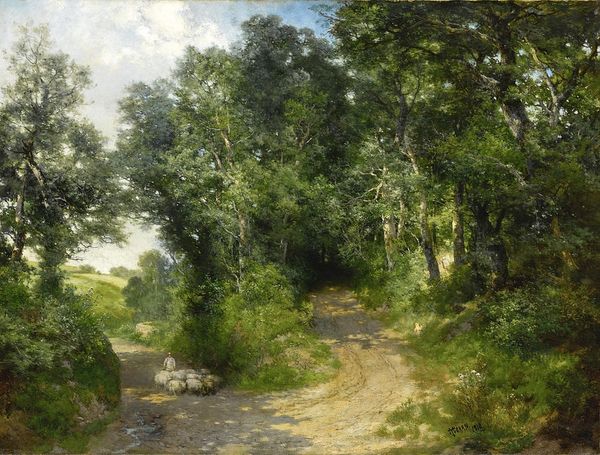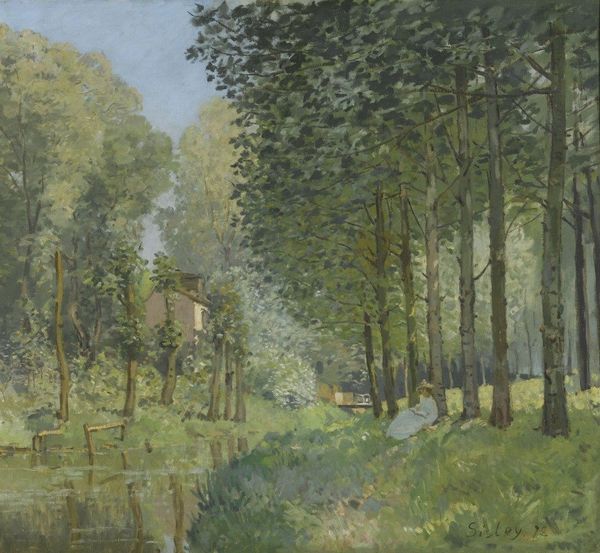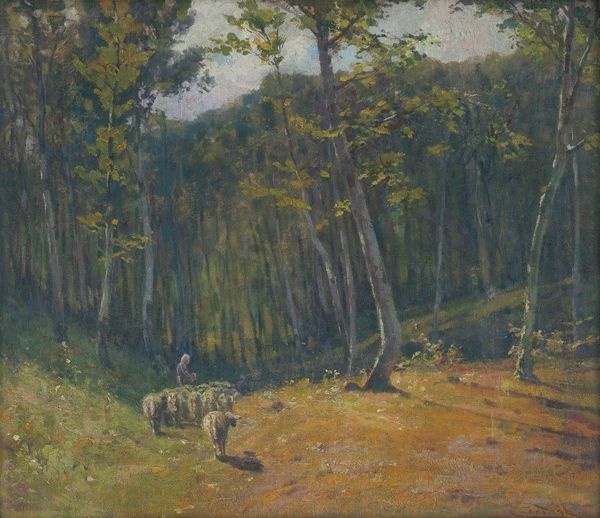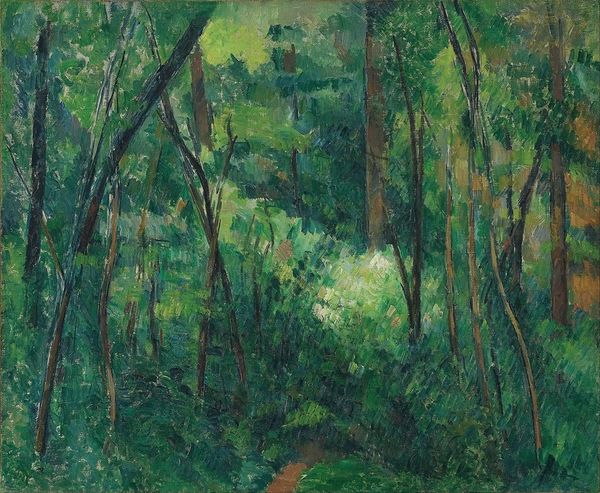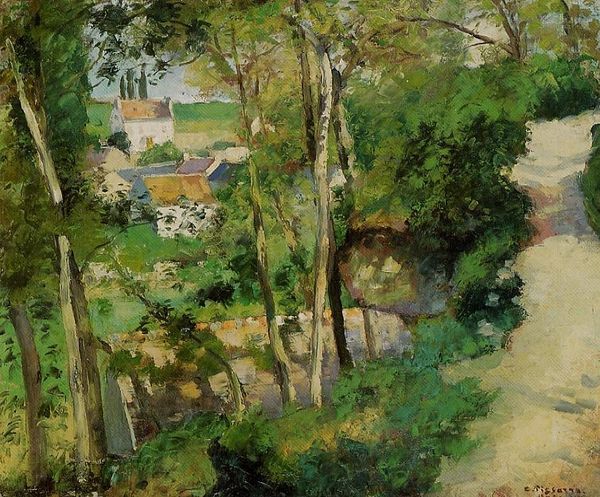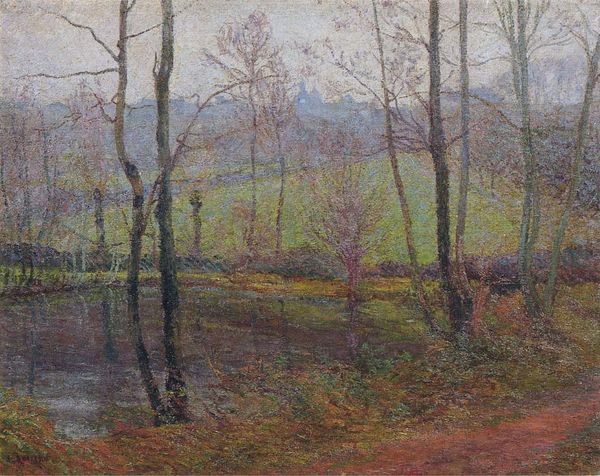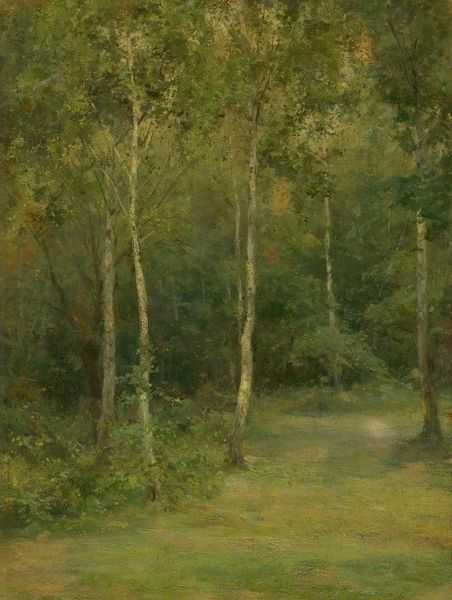
Copyright: Public Domain: Artvee
Editor: Here we have Camille Pissarro's "Edge of the Woods Near L'Hermitage, Pontoise" painted in 1879, using oil paint. I'm immediately drawn to the dense green foliage, it almost feels claustrophobic, yet there is a house in the background which is very interesting. What strikes you most about it? Curator: Considering the socio-political climate of France during the late 19th century, this scene becomes quite poignant. Pissarro painted this shortly after the Franco-Prussian War. Does the seemingly ordinary landscape resonate differently when you consider the national mood following such a conflict? Editor: That's fascinating, I didn't know that! It adds a whole new layer of meaning. I was focused on the way the light filters through the trees and how that is kind of a traditional Impressionist touch. Curator: Precisely! But think about Impressionism’s rejection of academic art, which often glorified war and the powerful. Pissarro instead directs our gaze towards the recovery and resilience found in everyday life and the land itself. Who do you think this painting serves? Editor: So, he's turning away from heroic depictions to something more… communal? Perhaps even a commentary on what *actually* matters to the French people, as opposed to grandiose military victories? I think that perspective brings into play notions of land ownership, community, and the changing face of the French countryside due to industrialization. Curator: Absolutely! Pissarro subtly challenges the established narrative, making us question whose stories are valued and immortalized on canvas, while also painting the everyday. Editor: I had no idea there was so much behind such a seemingly simple scene. It's much more profound. I see it, thanks to you! Curator: It reminds us to question the dominant narratives and value art's potential to represent diverse experiences and perspectives.
Comments
No comments
Be the first to comment and join the conversation on the ultimate creative platform.
